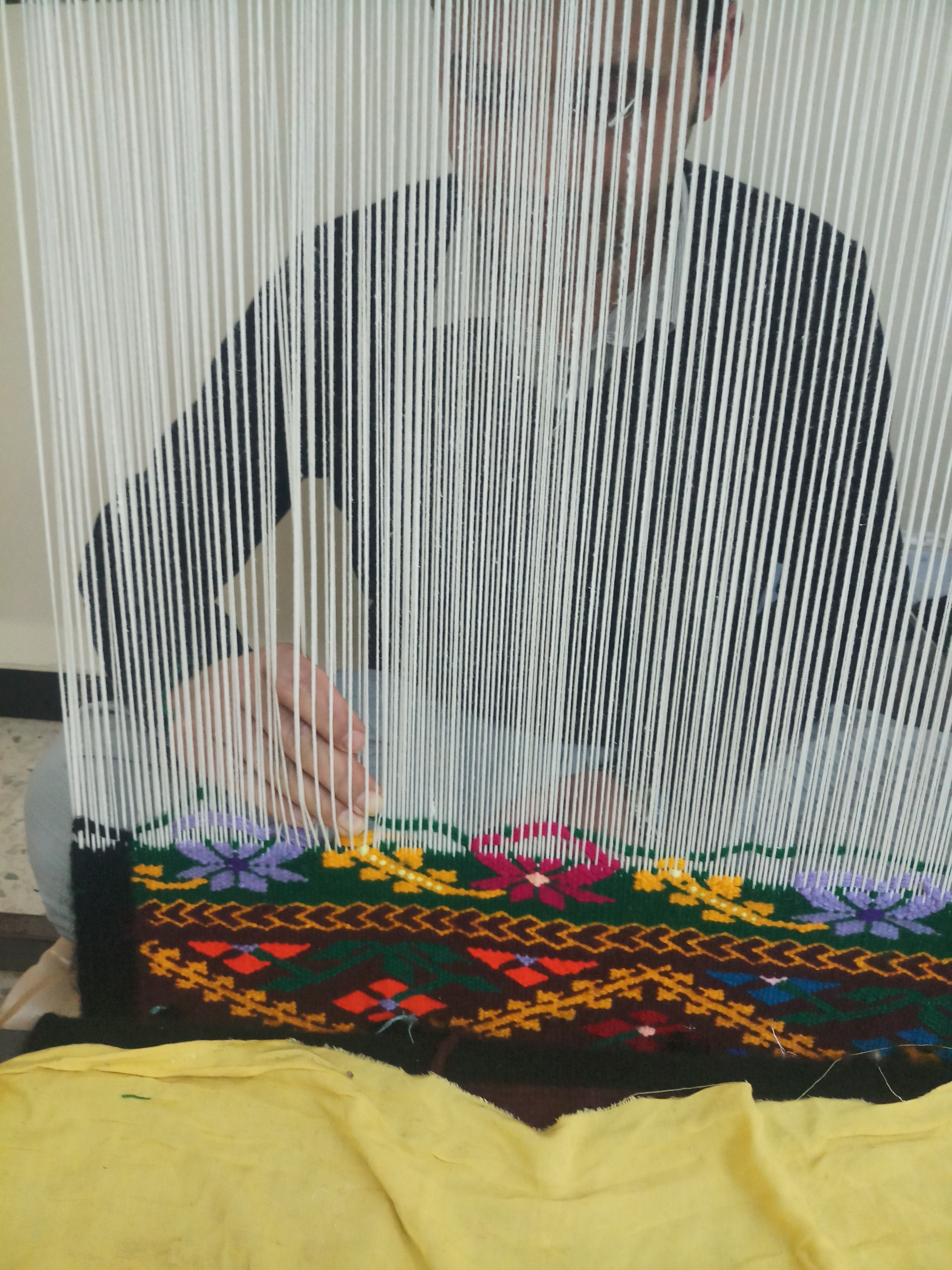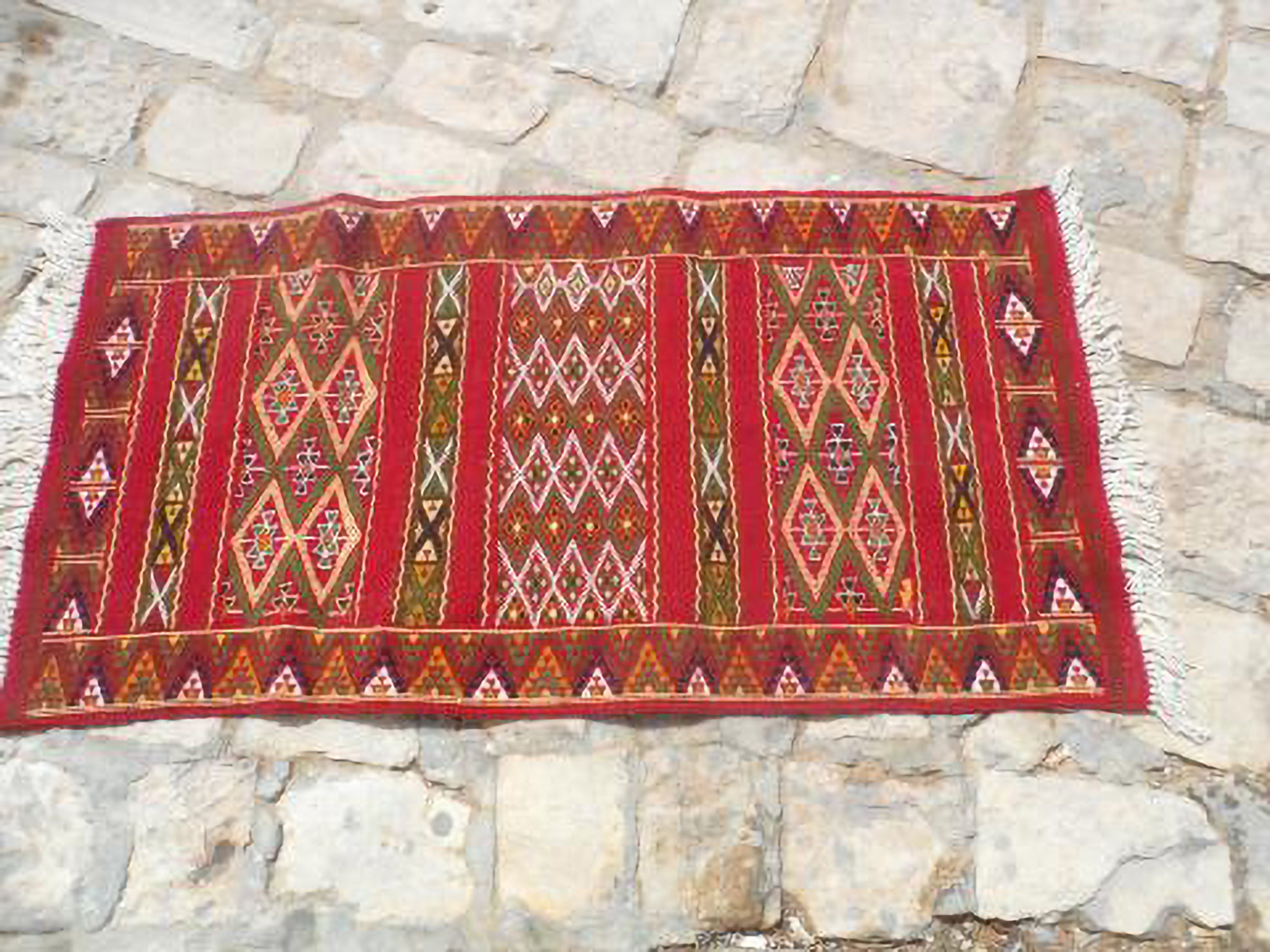
Hocine Bazine at the Cultural Survival Bazaar at the Prudential Center in Boston, December 2018.
Berber Art Market’s handwoven rugs are unique pieces of art. Based in the heart of Algeria in Ghardaïa, “the Pearl of the Oasis,” Berber Art Market operates out of the home city of the Amazigh Peoples, Beni M’Zab. The ancient city of Ghardaïa, now a UNESCO World Heritage Site, was founded almost 1,000 years ago in the M’Zab Valley in the Sahara Desert. Rug weaving has long been a major family craft in the region. Berber Art Market founder, Hocine Bazine, is proud of this connection to his heritage. “Our authentic Berber handwoven rugs are of high quality and are handmade with 100 percent sheep wool or pearl cotton with knowledge and skills passed down from our ancestors,” he says. These beautiful rugs are sought after for many home décor purposes— for living rooms, bedrooms, hallways, or entryways, and for hanging on walls.
In the age of factory-made goods, Bazine credits his grandmother for passing her weaving knowledge and love for the craft to him. “I have loved this art ever since I was a child. I learned rug weaving from my grandmother,” he says. “At a young age I had the pleasure of watching her create the most exquisite rugs, and go through the whole process of drying wool, arranging lines on the traditional hand loom, and producing a beautiful piece of art. I am grateful to those who encouraged me to save this heritage and fine art.” Berber rugs are woven for many purposes: for decoration, or for more utilitarian purposes such as bed coverings or sleeping mats. A local tradition is to furnish a bride’s room in handwoven rugs.

Weaving on a vertical handloom. Photo courtesy of Berber Art Market.
Bazine details the painstaking process of production. He explains that one of the most elaborate weaving techniques, carried out by specialized artisans, is the wrap, which is the essential part in a rug. In this technique, “the vertical yarn must be attached to the upper and bottom beam. The loom works to hold the threads vertically in place and allows the interweaving of the weft horizontally. The basic concept of weaving is to intersect the longitudinal threads, the warp, with the transverse threads, the weft (or woof). When the yarn is stretched and fastened to the loom, that would create a taut warp. It starts by working from the bottom to top. Hand loomed is a slow process that allows for the creation of durable weaves and highly detailed Berber patterns.” Women generally work in all stages of drying and cleaning the wool, while men assist in weaving and applying designs and drawings. The weavers use dyed scale of wool in various shades in white, red, brown, blue, grey, and black. In 2006, Bazine started working on some new techniques that allowed him to save time and effort while producing the same results. In 2012, he started his own business, Berber Art Market, as an independent weaver. “It was then,” he says, that “I realized that I had to keep this noble art alive for the next generations. Many Berber families gain their daily bread from manufacturing rugs and carpets. I strive to help families rise out of poverty by buying their wool and employing them as weavers. Keeping my Berber culture and its legacy alive motivates me to work harder and harder.”

Traditional Amazigh rug design. Photo courtesy of Berber Art Market.
Since founding Berber Art Market, Bazine has also begun traveling to exhibit his art, participating in different exhibitions such as the U.S. Embassy Bazaar and at the International Folk Art Market in Santa Fe, New Mexico. He has also participated in the Cultural Survival Bazaars several times since 2018. In Bazine’s home region of Ghardaïa there isn’t much tourism, so access to market is a significant obstacle for artisans. Many artisans also lack tools for development and access to transportation. Yet, Bazine remains undaunted: “I have a great desire to carry out my mission. For each obstacle, I try to find a solution. My goal and passion is helping lots of families out of poverty by offering them a source to earn a living. This, in addition to keeping our culture and legacy alive, is a motivation to work more and more. All those things grew through me and encouraged me to continue this heritage and save this noble art.”
Missed the virtual winter Cultural Survival Bazaar series? Watch it and support Indigenous artists at bazaar.cs.org
